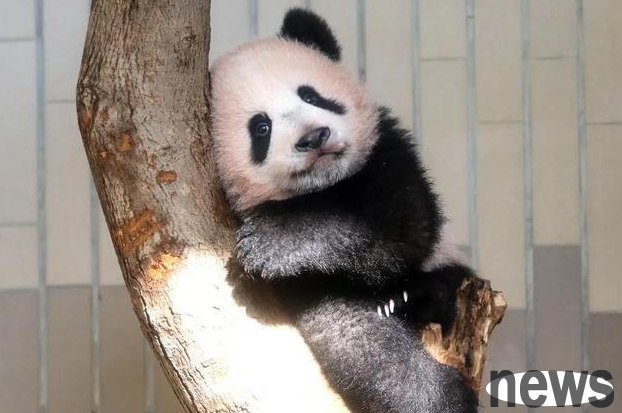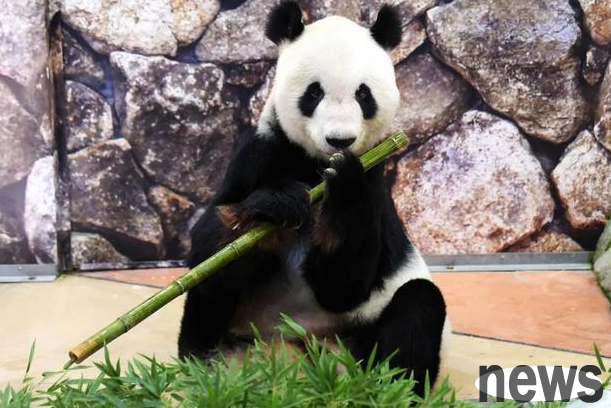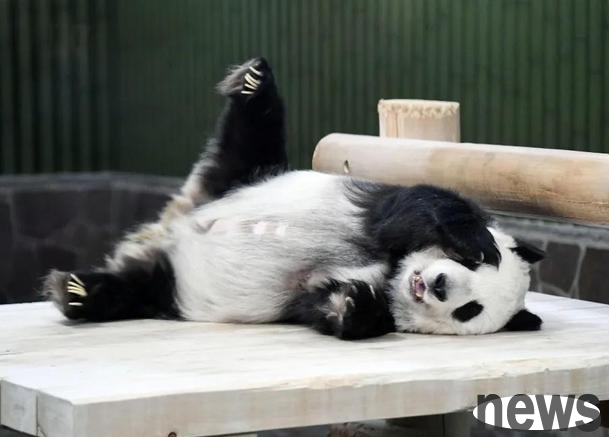The 5-year-old female giant panda "Kanoka" at Ueno Zoo in Tokyo, Japan will be returned to China next Tuesday (February 21). The Japanese people are reluctant to leave and rush to say goodbye to Kaoroka at the zoo.
In addition to Kasuka, the 30-year-old male giant panda "Yongmei" who lives in Wakayama Prefecture, Japan and his twin daughters "Sakurahama" and "Momohama" will also return to China next Wednesday (February 22).

The diplomatic relations between China and Japan have normalized for 50 years, and panda diplomacy has also lasted for half a century. Through the following articles, we will take you to review how giant pandas traveling to Japan contribute to China-Japan friendly relations.
Popular King of Giant Panda "Xiangxiang" has repeatedly postponed its return to China
Xiangxiang" has a very innocent look. The parents of giant bear cats
Giant Panda "Xiangxiang" are the giant pandas "Bili" (Japanese name "Lili") and "Fairy" (Japanese name "Zhenzhen"). In June 2017, "Bili" and "Fairy" gave birth to "Xiangxiang" through natural mating. In December of the same year, "Xiangxiang" made its first public appearance.
"Xiangxiang" has always been loved by the Japanese people and is very popular. According to Ueno Zoo, in order to enter the park to see the "Fragrant Scent" appearance, someone once started queuing at around 3 a.m. On the fifth birthday of "Kanka" in 2022, a five-story-high poster was hung out in an Ueno department store in Tokyo, with the words "Happy Giant Pandas".
CCTV once reported that according to Japanese experts' estimates, "Xiangxiang" has brought at least an economic effect of about RMB 2.7 billion to Japan, which is equivalent to 1.3 times the construction cost of Tokyo Sky Tower. After the news that "Xiangxiang" was about to be returned to China came out, a large number of people rushed to the zoo to say goodbye to Xiangxiang. The longest queue time had been more than 4 hours, and later it was changed to a lottery system to enter the park.
Although the Japanese people are very reluctant to "Xiangxiang", since their parents were lent to Japan by China, Xiangxiang's ownership also belongs to China.
It is reported that it was initially stipulated that Xiangxiang was "returned when it was over 24 months", but many people wanted her to stay in Japan at that time, so they decided to return it to China by the end of 2020. Later, due to the impact of the new crown epidemic, the return period of "Xiangxiang" was postponed 4 times, and it was finally decided to return it on February 21, 2023.

Giant Panda Yongming has traveled to Japan for more than 28 years.
The giant panda "Yongming" has been in Japan for nearly 30 years and has bred 16 children
The giant panda "Yongming", which will also be returned in February this year, came to Japan from China as early as 1994 and has been living in the world of entertainment facilities and adventure in Shirahamata, Wakayama Prefecture, Japan.
"Yongming" is 30 years old this year, equivalent to about 90 years old in humans. It is the oldest giant panda in Japan and has bred 16 giant pandas.
For research on the protection and breeding of giant pandas, "Yongming" will return to the giant panda breeding research base in Chengdu, China, with his 8-year-old twin daughters "Sakura" and "Taoba". Before leaving, the garden specially served him a big meal and used bamboo to express the words "Thank you".
The "friendly ambassadors" of China and Japan reviewed the giant panda's journey to Japan
The history of Sino-Japanese panda diplomacy can be traced back to the Tang Dynasty.
According to the Japanese Royal Yearbook, in 658 AD, Wu Zetian gave a pair of living white bears (giant pandas) and 70 skins as state gifts to the Japanese Emperor Tianwu. This is the earliest known record of Sino-Japanese panda diplomacy.

In 1972, in order to commemorate the normalization of diplomatic relations between China and Japan, the Chinese government gave Japan a free gift of a pair of giant pandas "Kangkang" and "Lanlan", which immediately set off a giant panda craze in Japan. The two giant pandas have been living in the Ueno Zoo in Tokyo since then, contributing a lot to the number of people entering the zoo. In 1973, it even set a record of 9.2 million.
China also presented giant pandas "Huanhuan" and "Feifei" to Japan in 1980 and 1982 respectively. The two giant pandas gave birth to "Tongtong" through artificial insemination. "Tongtong" is the first giant panda to be bred and grown in Japan. Its birth has caused a giant panda craze in Japan.
In June 1988, "Fei Fei" and "Huanhuan" gave birth to "Youyou" in Japan again. "Fei Fei", "Huanhuan" and "Tongtong" died one after another, and "Youyou" returned to China in 1992. In exchange, "Lingling" who originally lived in Beijing Zoo went to Japan.
"Lingling" then became the most popular "star" of Ueno Zoo, but after his death in 2008, Ueno Zoo was once in a panda-free situation, and the number of people entering the park fell below 3 million.
Finally, after waiting for three years, Ueno Zoo welcomed the giant panda "Bili" and "Fairy", which is the parents of "Xiangxiang". In 2021, the "Fairy" gave birth to "Xiaoxiao" and "Leilei".
and above giant pandas live in Tokyo. In addition to Tokyo, the giant pandas at Shirahama Nail Adventure World Paradise in Wakayama Prefecture also raise Chinese giant pandas and their descendants.
"Yongming" is the father of this big panda family. The giant pandas born here have the word "湖" in the names, which is called "湖后". As of 2022, Adventure World Paradise has sent 11 children of giant panda "Yongming" back to China.
As for the giant pandas "Dandan" (formerly known as "Shuangshuang") and "Xingxing" (formerly known as "Kinzhu") who live in Kobe Prince Zoo, they pray to Japan for the revival of the Sakakami earthquake-stricken area. Two giant pandas arrived at Prince Zoo in 2000. After "Xingxing" returned to China in 2002, "Second Generation Xingxing" went to Japan as a substitute.
"Second Generation Xingxing" was originally named "Longlong", and was a child raised by "Jia Jia" before coming to Hong Kong. After the sudden death of "Second Generation Xingxing" in 2010, only "Dandan" was left in Kobe Prince Zoo.
Giant Panda is China's national treasure. As a symbol of China-Japan friendship, it plays a unique role in promoting the friendship between the two peoples and developing bilateral relations. It also witnesses the process of friendly exchanges between China and Japan over the past half century.